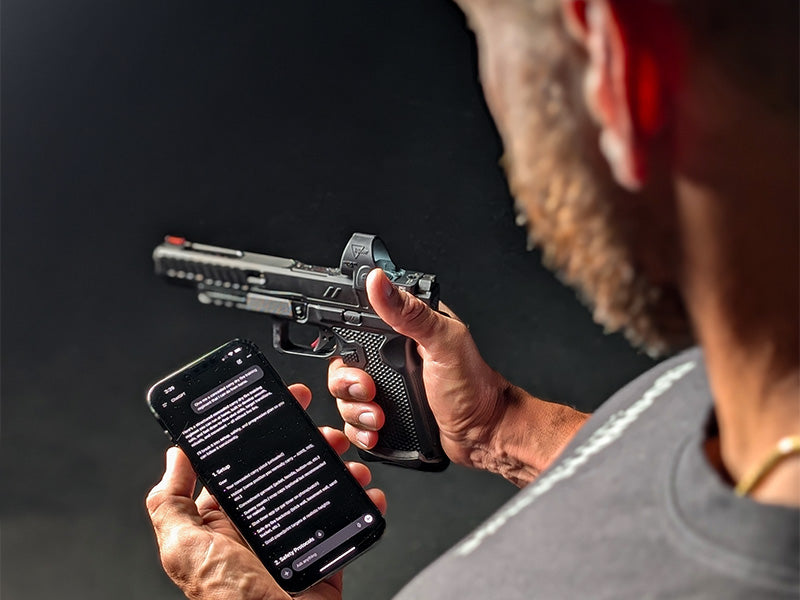Let’s be real: AI is everywhere now. You’ve probably heard about ChatGPT, seen some wild AI-generated content online, or maybe even used it to write a product description or school paper (don’t worry, we won’t tell).
But here’s the real question:
Can AI actually make you a better concealed carrier?
Surprisingly, the answer is yes, if you use it the right way.
1. Smarter Dry Fire Planning with AI
Dry fire is essential, and we all know we should be doing it more often. But sometimes it’s hard to know what to focus on.
Enter ChatGPT.
You can ask it:
“Give me a 10-minute dry fire routine focused on concealment draws and target transitions.”
or
“Build me a progressive 4-week dry fire plan for improving my support-hand recoil control.”
It can give you structure, ideas, and progression without having to scroll through forums for hours. Combine that with a shot timer and your phone camera, and now you’ve got a high-output solo training session.
2. Better Understanding of Use of Force Laws
We always recommend talking to an attorney or using trusted legal resources like USCCA, but AI can help break down complex legal concepts into plain English.
Ask it:
“Explain the difference between 'stand your ground' and 'duty to retreat' laws in Texas.”
It’ll give you a basic overview that you can use as a starting point for deeper research — or talking points to bring up in a legal seminar.
3. Tactical Decision-Making Scenarios
This one’s actually kind of fun:
Use AI to create what-if scenarios.
“Write me a scenario where I’m attacked in a parking lot with my kids present. Include choices I need to make.”
From there, you can roleplay responses, analyze decisions, and train your brain to think through tough situations before they happen.
This is the kind of mental rehearsal high-level shooters and protectors build into their training, and now it’s accessible to anyone with a phone.
4. Everyday Carry Optimization
Trying to decide between appendix and strong-side carry for a new holster? Wondering what setup works best for your body type or daily routine?
You can feed ChatGPT your specifics and ask for pros/cons or decision frameworks.
“Compare appendix carry to 3 o’clock carry for a medium build male who sits at a desk most of the day.”
It won’t replace actual experience, but it can speed up your decision-making, especially when paired with YouTube reviews and gear testing.
5. Training Smarter, Not Harder
Most of us don’t have unlimited time or ammo. AI tools can help you build smarter training schedules based on your goals:
-
Accuracy under time?
-
Draw-to-first-shot speed?
-
Concealed reloads?
Tell the AI what you want, your skill level, and your constraints, and let it suggest efficient drills. We’ve even seen people create printable logs and training scorecards this way.
A Word of Caution: AI Isn’t a Substitute for Real-World Experience
At Tier 1, we live this lifestyle. We test gear hard. We shoot drills often. We build holsters to stand up to the realities of carrying every day, not just the theory.
AI is a powerful tool. But it doesn’t replace live reps, professional instruction, or consistent carrying.
Use it as an accelerator, not a crutch.
Final Thoughts: Embrace the Tools, Stay True to the Mission
Concealed carry isn’t just about having a gun; it’s about being prepared. And in today’s world, that includes using the best tools available.
Whether it’s a Kydex holster you can trust or an AI assistant helping you build your training routine, the goal is the same: being more capable, more confident, and more ready.
Stay sharp out there.



